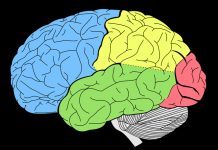Only 10% of the 300 different types of headaches have a known cause. Research says that every individual would have experienced a headache at some point in their life, and the ones who get them usually often oversee it.
When to Get a Headache Checked Out?
Headaches are caused when a blood vessel in the head or the neck, brain tissues, and major nerves originating in the brain sends out pain or distress signals. An eye, teeth, scalp, sinus, muscle, or joint pain can also lead to headaches due to the nerve connection.
Pain signals can be sent out due to various reasons, and it’s important to know the difference between trivial and serious issues. Here are a few pointers on when to get your headache checked out:
- Any type of headache that begins after the age of 50 years
- If you experience a sudden shift in the type or area of pain
- An unusually severe headache or the one that worsens with time
- If you feel a rise in pain while coughing or moving around
- The gradual or sudden difference in personality or mental function
- Headache accompanied by other effects such as physical/neurological symptoms, sore muscles, confusion, seizure, red-eye, numbness, fever, visual/ speech difficulties, etc.
- Pain or tender temples and the ones that wake you up could cause serious trouble.
- Inability to perform daily activities due to pain
- An ache after a head injury is a matter of concern
- Cancer patients and people diagnosed with weak immunity should be more careful
Important Types of Headaches
It is important to get in touch with your family doctor because tension, migraine, and cluster headaches appear normal in CTs, MRIs, and ECGs. A medical professional who knows your family history can diagnose your headache with a physical examination. The scans are suggested to make sure that there are no silent abnormalities.
1. Tension Headaches
An ache caused due to tension has become highly common nowadays. A stronger dose of medicine, especially tricyclic antidepressants, prescribed by a doctor is often the best solution when it comes to an ache that has been recurring for quite a long time.
Few home remedies to manage and reduce the pain are:
- Regular yoga
- Hot and cold compression
- Clenching your jaw or teeth grinding can ease the disturbed blood vessels
- Avoid skipping meals
- A nap or light snacks can help too
2. Migraine Headaches
For an untrained person, the symptoms of migraines and sinus are often similar. Hence, leading to a misdiagnosis. Here are a few facts about migraines that create a cause for concern:
- Migraine affects more women than men
- Men affected by migraines are highly susceptible to heart attacks
- They are less frequent but severe
- They are hereditary in most cases
- Migraine aches are caused by fluctuations in blood flow and never activities.
The same agents usually trigger migraines. Therefore, it is necessary to identify the triggers to prevent an ache. Here are the warning triggers that induce migraines usually:
- Irregular sleep patterns
- Irregular intervals between meals
- Sudden light, loud noise, or strong smell
- Stress and fatigue
- Fluctuation in caffeine levels
- Nitrates absorbed by consuming meat or fish
- Wine, chocolate, aged cheese, and MSG
Migraines can occur immediately or within a few hours after being exposed to the triggers. The usual symptoms of migraine are:
- Pulsating pain that begins on one side of the head moving towards the back
- Continuous pain for an entire day
- Numbness or tingling in the limbs, nausea, and vomiting
- Inability to perform daily activities
- Visual problems such as seeing sparkles, flashing lights, wavy lines, halos, or temporary blindness commonly known as aura symptoms.
Migraines can be treated with medicines only but overuse or abuse can lead to rebound attacks. Thus, therapy or preventive medicines are recommended.
| Headache Type | Triggers | Duration | Pain | Treatment |
| Tension | Emotional stress/Joint Pain | 20 mins – 2 hours | Squeezing pain on both sides | OTC painkillers, relaxation |
| Migraine | Food and sensory triggers | Differs from individual to individual | One side and moves backward | Pain killers, preventive medicine, and therapy |
| Cluster | Smoking | 30 – 60 mins | Around the eye and one side of the head | Increased oxygen intake and medicines |
| Drug-Induced | High/ frequent intake of toxic drugs or medicine | Several weeks or until complete detox takes place | Dull ache on one side that worsens in the morning | Quitting the high dose or toxic drug |
| Sinus Headaches | Anything can cause inflammation of the sinusitis | 10 days – 8 weeks depending on the severity | Cheekbones, forehead, and bridge of the nose. | Antihistamines, antibiotics, decongestants |
| Ice Cream Headaches | Cold food and beverages | 5 – 10 mins | Forehead and temples | Slow consumption of cold food |
| High BP Headache | Years of high blood pressure | Rare, so not researched yet | Feels like migraine | Opting for headache-free treatment for high BP |
| Exercise/ Sex Induced | Sudden exercise or sex | 5 mins – 48 hours | One one side or on the entire head | Warming up and taking NSAIDs an hour before |
Constant or not, headaches are a cause of discomfort and pain for many of us. Prompt treatment, awareness about triggers and preventive measures are really helpful.


















